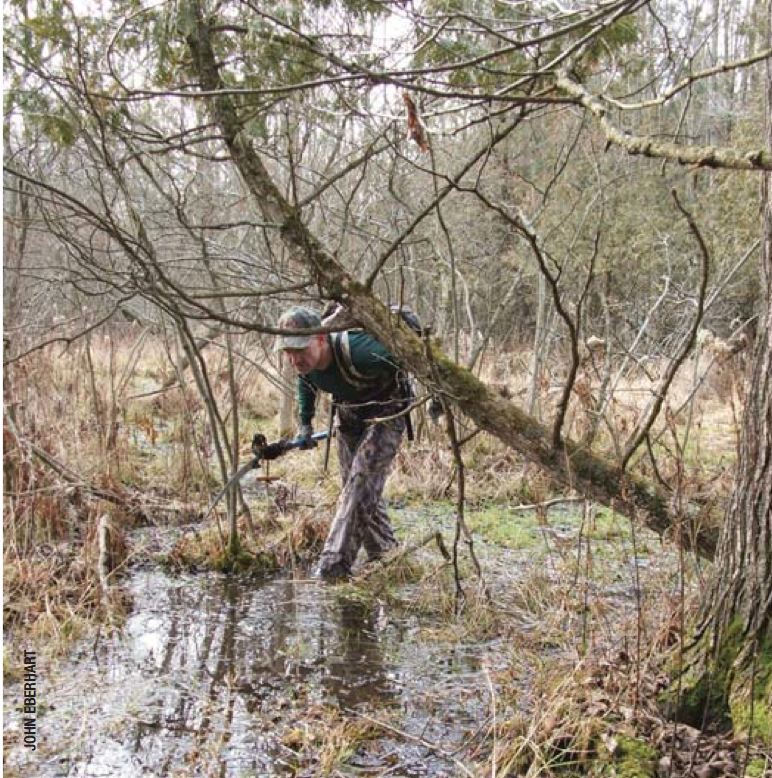
Even in the heaviest-hunted states, public-land gems can provide somewhat consistent opportunities to kill mature bucks if hunters are willing to work above and beyond their competition.
Hunters who have private land they can hunt rarely gravitate to hunting open-to-hunting public lands simply because no matter how much hunting pressure private parcels receive, nearby public lands usually receive more, have fewer mature bucks and can be more difficult to hunt. However, even in the heaviest-hunted states, there are public-land gems that can provide somewhat consistent opportunities to kill mature bucks if hunters are willing to work above and beyond their competition.
The public lands I will be referring to are those where any licensed hunter can go at any time and hunt within the parameters of general state laws. These public lands are not to be confused with state and federal waterfowl preserves and vacation parks where hunting is allowed by some form of controlled allocation or permit in order to keep the deer herd in check. Public lands with special stipulations oftentimes offer better hunting than private lands.
PUBLIC LAND REALITY
The principle difficulty with public land is that every person hunting there has the same right to be there as you. There’s no such thing as your spot! Encroachment is normal and to be expected. When lots of hunters target every antlered buck and many target any deer, including button bucks, you have what I call heavy consequential hunting pressure, or HCHP for short, and there’s nowhere it’s more evident than on public lands.
Public lands located near large human population centers definitely have it the worst from a shear hunter density standpoint, due to the lack of private access and limited public land. Because of the nature of uncontrolled hunting pressure, deer residing in such areas are far more in sync with their survival instincts than their brethren on private lands.
Deer either learn quickly how to evade hunters or they suffer the consequences, it’s that simple. To be somewhat consistent at taking mature bucks from heavily hunted public lands, you have to outsmart the deer and outwork the other hunters. To me, it’s the ultimate test of one’s hunting abilities.
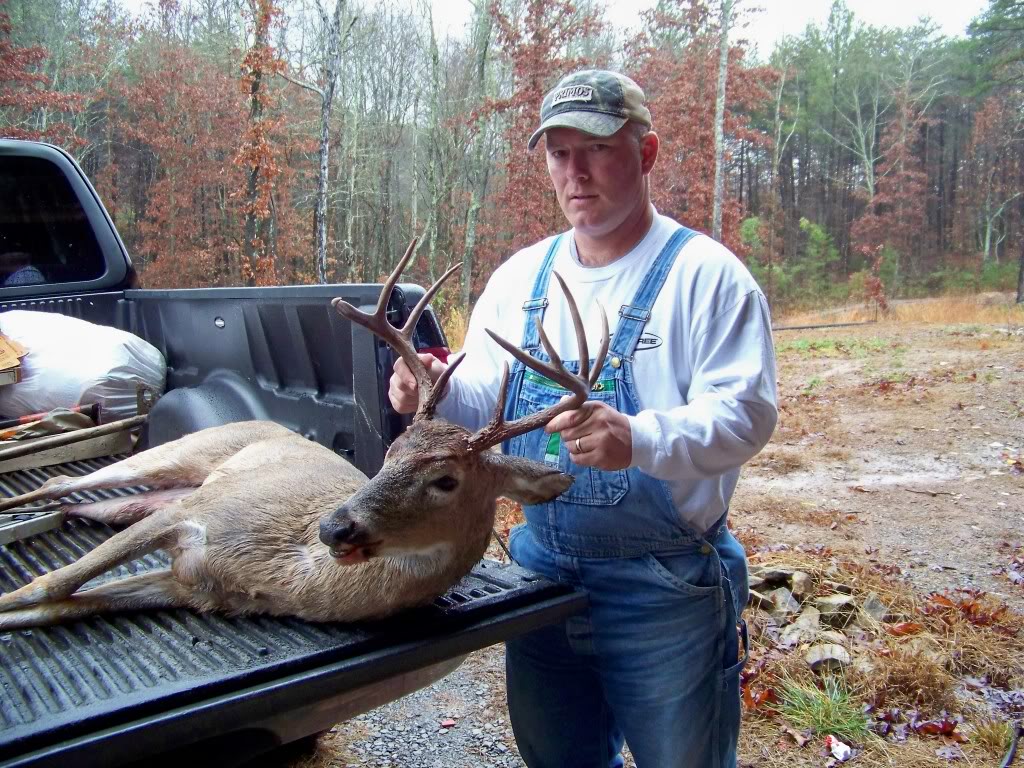
Think about it, public land hunters have to deal with immense competition, they have zero control and they’re oftentimes hunting areas with few if any 31⁄2-year-old-or-older bucks. The deer are extremely conditioned to avoid hunters and there’s no guarantee other hunters won’t hunt near or even in their setups when they’re not there.
Expensive stands must always be removed to keep them from being stolen, hunting apparatuses must strap-on because nothing can puncture the trees, trimming branches or cutting shooting lanes is often illegal, marking entry and exit routes allows other hunters to find your location and set up on top of you, and during firearms season some public lands can be flat out dangerous to be on.
Then, of course, there’s squirrel and upland bird hunting that is totally out of a bowhunter’s control, and typically any nearby gunfire will stifle the daytime movements of mature deer. Motion cameras and signposts often prove mature bucks exist on public lands even though they’re rarely seen during daylight.
Now here’s the beauty of bowhunting on public land. When you combine HCHP with the survival instincts of whitetails, a natural by-product occurs. The most sought after deer are pushed into difficult-to-access areas where few if any hunters are willing to go. This dramatically reduces the areas a mature buck may move or transition through during daylight hours and dramatically increases the amount of hunting land you can immediately discard.
My background for writing about hunting public land is that I’ve exclusively hunted public lands and free permission properties for more than 52 bow seasons, have hunted 18 different chunks of public land in Michigan, as well as public lands in Illinois, Kansas and Iowa. In fact, I’ve never owned or leased land, paid a dime to hunt anywhere in my life, or hunted over a food plot, mineral lick or bait.
PROPER SCOUTING STRATEGIES
Scouting and preparing locations in remote areas should begin as soon as your season ends and can continue until spring green-up, as visual sign such as runways, drop- pings, hubs of activity, scrapes, utilized licking branches and rubs from the past season remain identifiable. During this period you can scout to your heart’s content because spooking deer has no effect on their movement habits next season. Typical prolonged pre-season scouting intrusions in HCHP areas are definitely not advised, because they will either push mature deer elsewhere or stifle their daytime movements.
Many hunters replicate the generic hunting practices seen on TV shows, hunting videos and in print media: hunting the perimeters of short crop fields; hunting in exposed areas in open timber with no understudy and in easily accessed areas — while performing a list of generic tactics.
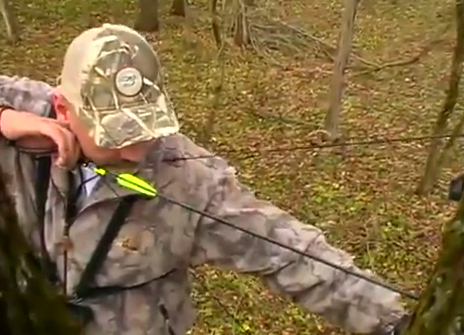
While these practices might work in micro-managed and lightly hunted areas, they rarely if ever work on heavily pressured public lands. When competing against many hunters with similar generic styles of hunting, you should never expect better results unless you think you’re just luckier. To remove luck from the equation you must scout, prepare locations and hunt in a manner outside of the mainstream.
A rule I rarely waver on when scouting public ground is no matter how good the signposts, runways or a location looks, if it’s easily accessed, I will rarely prepare it as a hunting location because other hunters will also access these areas during their pre-season scouting ventures, nearly guaranteeing that any mature buck activity at them will take place during the security of darkness, negating it as a productive daytime location.
Now is when personal desire, dedication and work ethic come into play. I scout for locations in areas where my access will require either using hip boots, waders, canoe, boat or crawling on my hands and knees through brush. You must think to yourself: If all the hunters in the area were trying to kill me, what area would I gravitate to where I might possibly feel secure moving in, or transitioning through, during daylight hours? In HCHP areas, it must be considered that bluntly.
Use Internet aerial photos to help locate isolated islands in swamps and marshes, areas across streams, rivers or lakes that have no other access, or openings
surrounded by large areas of bedding brush. Quite often these areas are unidentifiable while on foot, but once found on maps you can take the necessary gear to access them for further investigation.
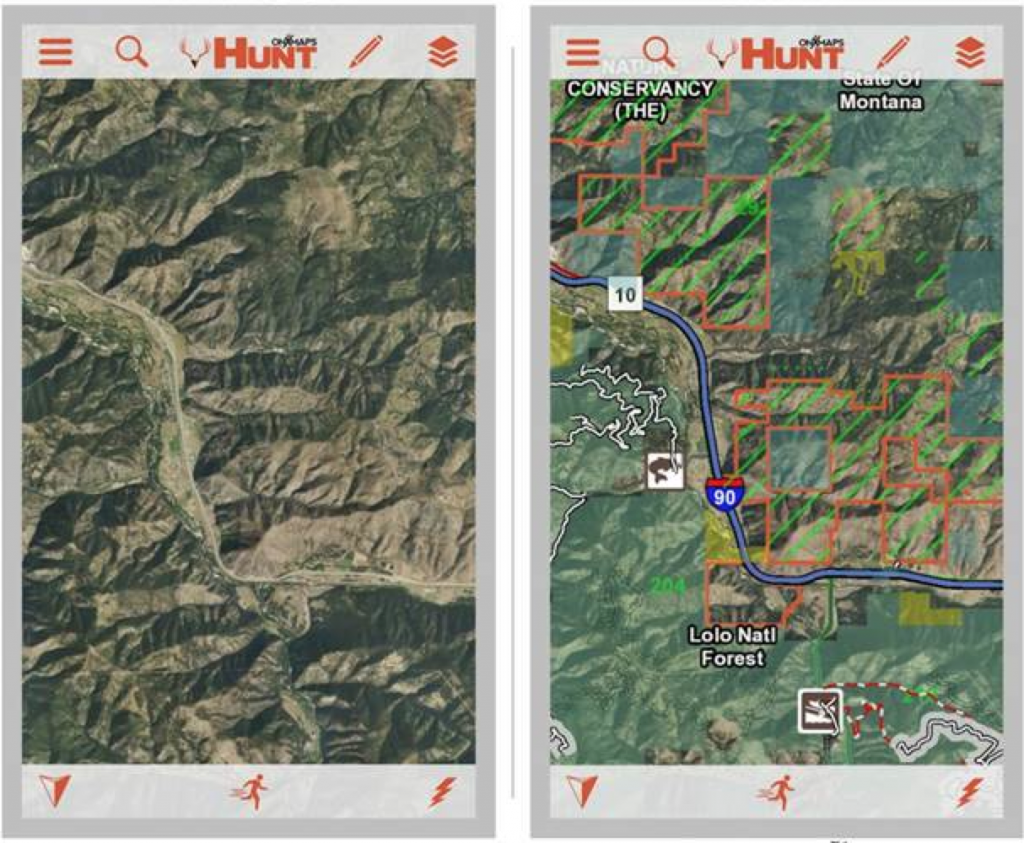
Once in a remote area, search for the best destination areas or convergence points the area offers. Deer that are pushed into these areas will find the best available food sources and there should be enough visual sign to acknowledge it during post season.
In order of importance, look for old apple trees, white oaks, red oaks or whatever food-bearing trees your part of the country is noted for. If during season these trees bear food, deer will feed on them before leaving the secure area to feed elsewhere after dark. While food sources are a mainstay focus for normal scouting and hunting practices, they’re not a must have when scouting remote areas where survival instincts trump food. After dark, a deer can easily travel a mile in 10 minutes to feed elsewhere.
If fruit or hard mast trees exist and you prepared locations at them, a speed-tour of them just prior to the season will be required to see if the trees are bearing food. This tour needs to be done during midday while utilizing your best scent control regiment. If possible, do it during a rainy or windy day, because either will aid in masking your noise and dissipating any residual odor.
If the trees bear food and there is fresh sign, hunt a couple of times during the first few days of season and then leave the entire area alone until the rut phases, when more deer will have been driven into the area and the peak in testosterone levels will likely have mature bucks moving during daylight hours in search of estrous does.
In small remote areas, your rut phase hunting plan should be to hunt only when you can commit to all-day hunts. Otherwise you’d spook deer with evening entries or with morn- ing exits. Also in these secure areas, a buck could at any time of day wander by with or in search of an estrous doe. In fact, midday, between the hours of 11 a.m. and 3 p.m., will likely be the best time in such areas. It’s imperative on morning hunts to be on stand and quiet at least an hour and a half prior to daybreak so you don’t spook deer with your entry. It’s also advised to limit hunts in these types of locations to three or four per season.
On many occasions, after scouting public lands, I’ve abandoned them because they simply didn’t have areas remote enough to weed out other hunters due to difficult access. I don’t hunt just to say I’m hunting, and if that were the case I’d hang in my saddle from a telephone pole in my yard.
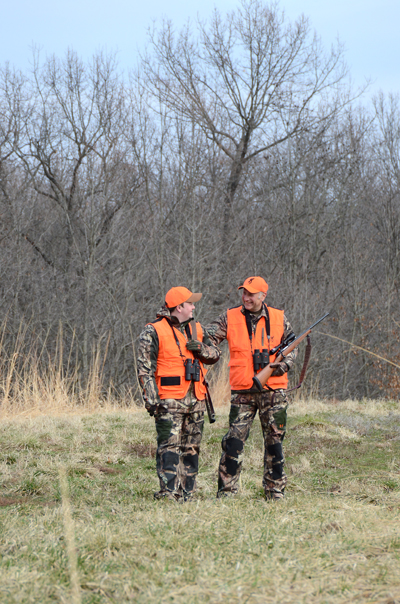
On the extreme opposite side of the difficult to access areas is finding locations extremely close to roads if the right types of security cover and conditions exist. If the property borders a well-traveled road or major highway that hunters won’t be walking down, and in areas where there’s dense enough security cover to block a visual from the road, scout the first 100 yards along it. I’ve taken five mature bucks within 80 yards of major highways, one on a morning hunt, three during midday and one on an evening hunt.
While I rarely hunt below 25 feet high on public land in Michigan, there were times when ground blinds were necessary and they were in remote locations where other hunters finding them wasn’t a huge concern. Ground blinds should be as natural looking as possible by using existing deadfalls and natural debris and totally clear the ground within them to bare dirt. They will need a little cleaning up during season, but it will be minimal.
Hunters can get away with using pop-up blinds in micro-managed areas, but on public lands you don’t have that luxury and they’re definitely not advised because to deer they stick out like sore thumbs.
HUNTING TACTICS
On HCHP public lands, don’t use decoys because mature does will usually spook from them and loudly stomp and snort, and mature bucks will rarely commit to coming in close enough to them for a shot opportunity. Some calling tactics can produce success if performed in the right places, at the right times of day, at the proper volume and infrequently. Subtle sparring sequences can draw in mature bucks during the first few days of season when they are jostling for dominance pecking order or during any of the rut phases when bucks are fighting for breeding rights.
Cold calling with doe bleats and an occasional grunt can also work, but they must be subtle enough that if a buck is bedded within hearing distance and doesn’t respond, it won’t alarm him, so that if he does get up during daylight, he might move in your direction out of previous curiosity.
Make sure any calling tactics are performed in areas where there’s adequate perimeter security cover, otherwise bucks will hang up out of range because there’s no visual to commit coming in to. When the rut phases arrive and testosterone levels peak, mature bucks move some during daylight hours. You must keep in mind, however, that other hunters have pressured the outlying property and frequently performed faulty tactics, making responses to your tactics far less likely. Allow your location to perform on the merits you chose it for.
The timing of typical public land hunting pressure creates a situation where deer often become conditioned to heavier evening pressure, with a major influx of hunters on weekends. If your schedule allows, hunt on Wednesdays, Thursdays or Fridays when there’s less hunter activity and a better chance of daytime deer movements.
The grand beauty of learning to hunt public ground successfully is that after a few years you’ll be able to go anywhere, at any time, under any conditions, and be successful because you’ll have learned how to be detail oriented and to deal with hunter competition.
— John Eberhart is an accomplished bowhunter specializing in heavy consequential hunting pressure areas. Learn more about his tactics through his instructional books and DVDs available at: www.Deer-John.net


